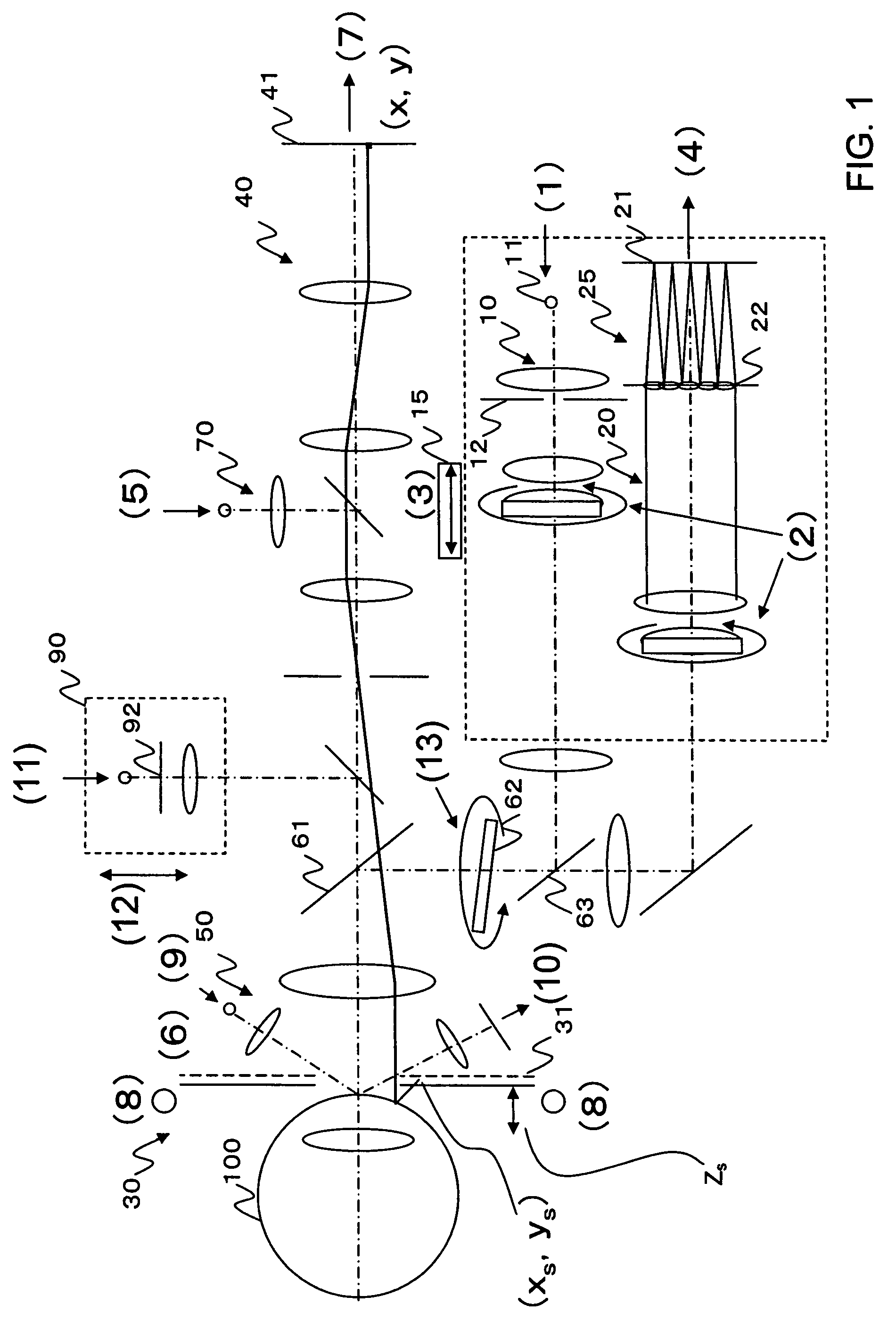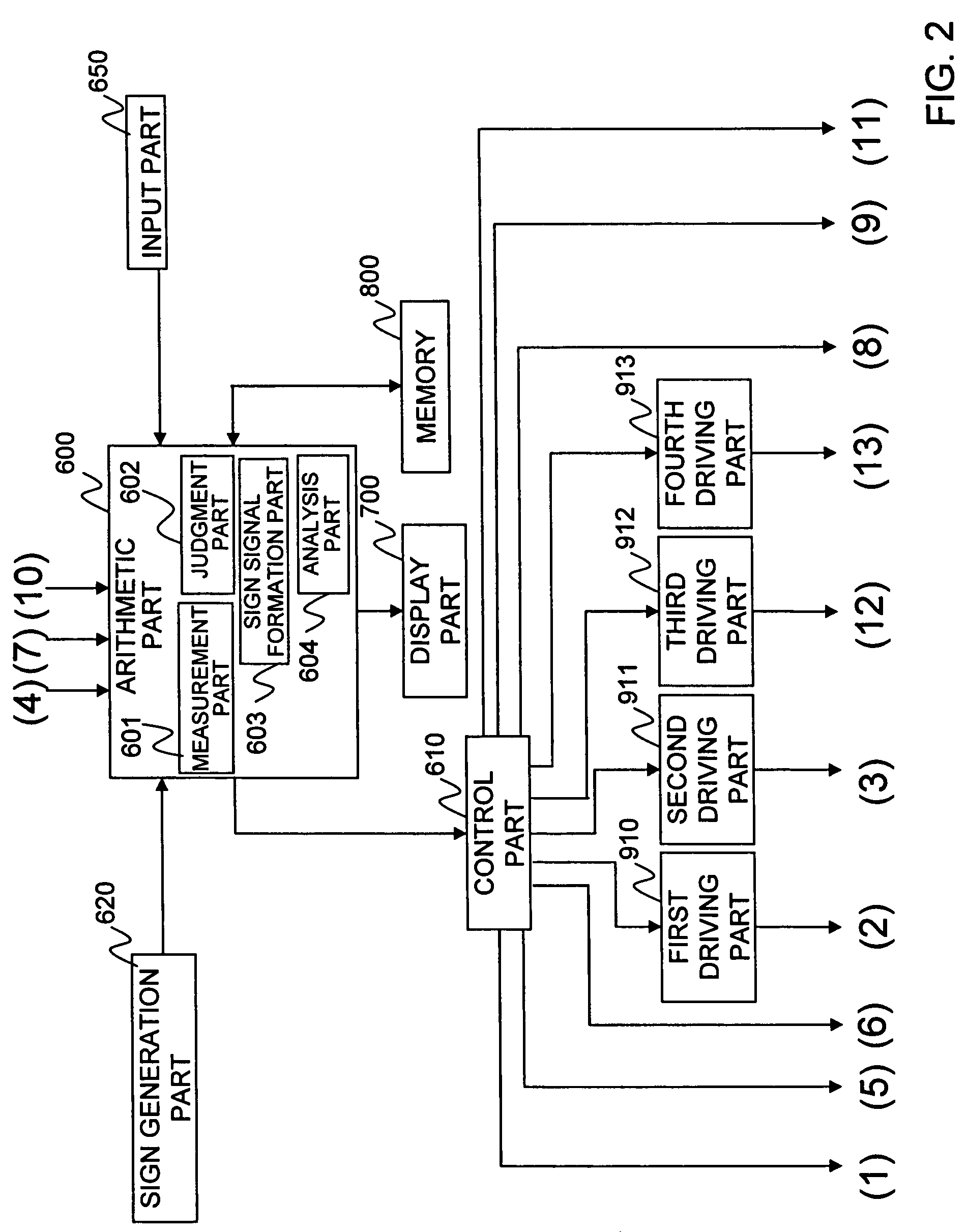Ophthalmologic measuring apparatus
a technology of ophthalmologic measuring and measuring equipment, which is applied in the field of ophthalmologic measuring equipment, can solve the problems of not being able to say that the demands relating to the judgment of the state of dry eye are sufficiently satisfied, and achieve the effect of meaningful measurement and facilitation of the judgment of the degree of dry ey
- Summary
- Abstract
- Description
- Claims
- Application Information
AI Technical Summary
Benefits of technology
Problems solved by technology
Method used
Image
Examples
first embodiment
[0081]FIG. 3 shows a measurement flowchart of a first embodiment.
[0082]In the first embodiment, blink interval data by a blink sign is measured.
[0083]The ophthalmologic measuring apparatus may be constructed to select one of a corneal wavefront measurement mode, an ocular wavefront measurement mode and a both-wavefront measurement mode of a cornea and an eyeball, or may be constructed to be capable of performing measurement in one of or plurality of these modes.
[0084]When the subject moves to a measurement position and the measurement is started, the ophthalmologic measuring apparatus is aligned at a position where the eye can be measured (S101). The alignment may be manually or automatically performed. For the wavefront aberration measurement, it is necessary to fix the positions of the cornea and / or the subject eye (retina, ocular fundus, etc.) and the ophthalmologic measuring apparatus within a specified range. The ophthalmologic measuring apparatus is manually or automatically c...
second embodiment
[0092]FIG. 4 shows a measurement flowchart of a second embodiment.
[0093]In the second embodiment, natural blink interval data are measured (blink automatic detection). That is, measurement is performed in a period in which the subject naturally blinks, and a change in aberration is extracted with respect to a common time from the blink.
[0094]The ophthalmologic measuring apparatus may be constructed to be capable of selecting one of the corneal wavefront measurement mode, the ocular wavefront measurement mode, and the both-wavefront measurement mode of the cornea and eye ball, or may be constructed to be capable of performing measurement in one of or plurality of these modes.
[0095]When the subject moves to a measurement position and the measurement starts, the ophthalmologic measuring apparatus is aligned to the position where the eye can be measured (S201). This alignment may be manually or automatically performed. For the wavefront aberration measurement, it is necessary to fix pos...
PUM
 Login to View More
Login to View More Abstract
Description
Claims
Application Information
 Login to View More
Login to View More - R&D
- Intellectual Property
- Life Sciences
- Materials
- Tech Scout
- Unparalleled Data Quality
- Higher Quality Content
- 60% Fewer Hallucinations
Browse by: Latest US Patents, China's latest patents, Technical Efficacy Thesaurus, Application Domain, Technology Topic, Popular Technical Reports.
© 2025 PatSnap. All rights reserved.Legal|Privacy policy|Modern Slavery Act Transparency Statement|Sitemap|About US| Contact US: help@patsnap.com



